Hello there! Can you believe that we’re to the end of our 2020 Spring Threadventure Garden Tour? I know – neither can I! The ultimate zen experience awaits you at our final destination, so hop aboard the Serendipity Express with me, and let’s take our magical virtual vacation tour bus to the last stop…

Portland, Oregon, and the Portland Japanese Garden
(And here we are… that sure was quick!)
The Portland Japanese Garden has an interesting history.
The idea was conceived by Mayor Terry Schrunk and a group of Portland citizens in the late 1950s, in response to burgeoning post-war ties between Oregon and Japan. In fact, it’s one of many Japanese gardens that were established across the US after World War II in an attempt to forge a healing connection with Japan.
Professor Takuma Tono of Tokyo Agricultural University was tapped to design the Garden in 1961. Unlike most Japanese gardens which usually follow a singular format, Professor Tono’s plan encompasses five different styles. Each one represents historical developments in Japanese garden architecture and each one communicates a distinct aspect of Japanese culture, enabling cultural exchange – no translator needed.
The Portland Japanese Garden opened to the public in 1967. In 1981 it became a “year-round” garden and today, it continues to provide Portland’s citizens with a respite from the fast pace of city living – an oasis of great beauty and serenity.
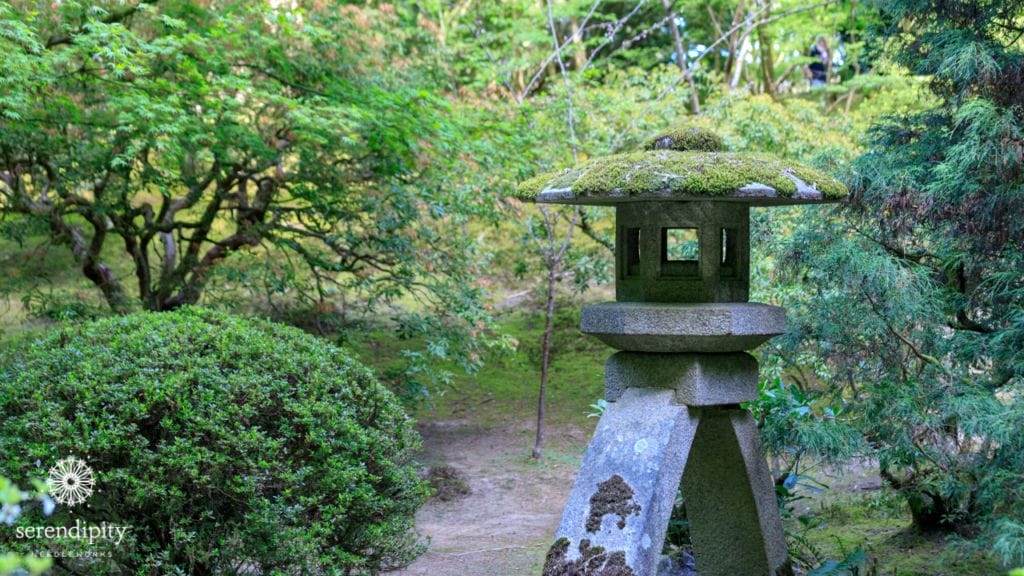
Since we only have a little bit of time together here today, we’re gonna visit the Strolling Pond Garden…
This beautiful garden actually has two parts – the Upper and Lower Ponds. A flowing stream connects the two water ponds, with the Lower Pond featuring a stunning waterfall!
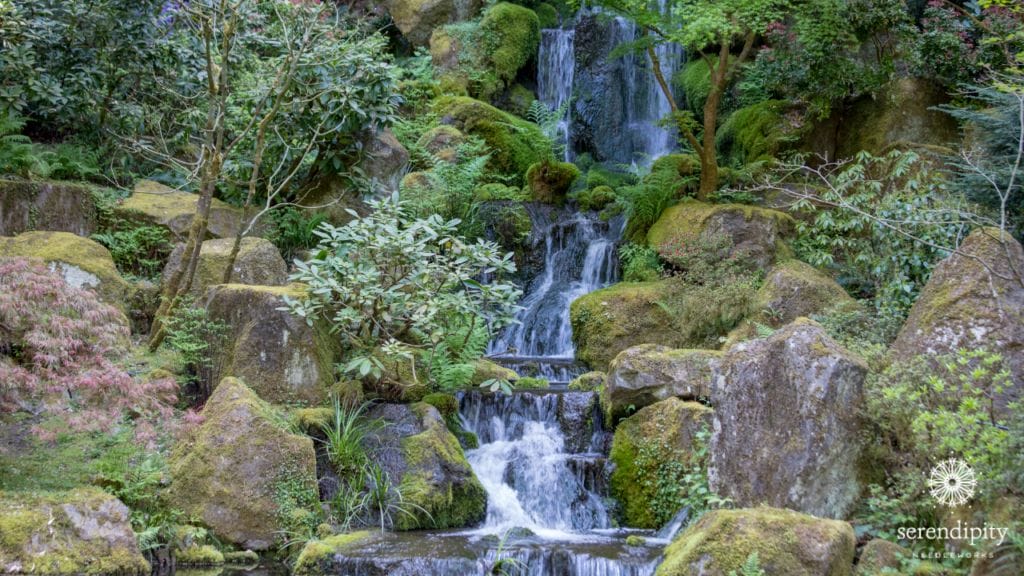
Strolling pond gardens have an historic connection to the Edo period (1607 – 1867). These luxurious sprawling gardens were created to reflect the wealth of their owners – daimyos and other aristocrats. Sometimes, they represent the landscape of the owner’s birthplace.
Heavenly Falls, in the picture above, flows into the Lower Pond of the Strolling Pond Garden. It’s just one of many water features you’ll find at the Portland Japanese Garden.
Here’s another water feature frequently found in Japanese gardens…
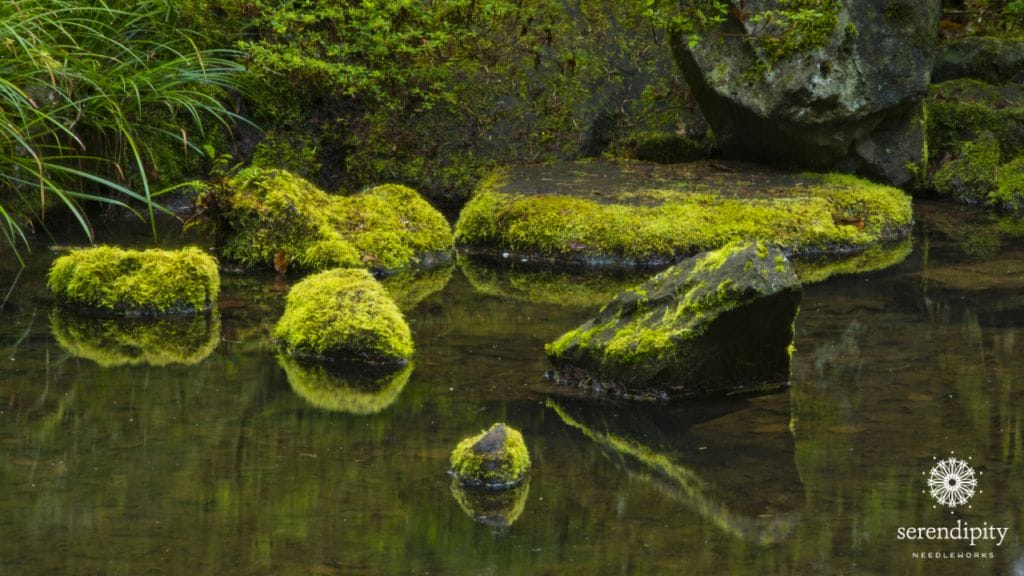
ponds – including koi ponds. Calm and quiet water reflects the surrounding landscape almost like a mirror.
Water features are present in lots of Japanese gardens because water symbolizes renewal, calm, wonder, and continuity in the hereafter. And water is a fundamental element for human existence. Japanese garden water features are typically asymmetrical, just like naturally occurring ponds and lakes.
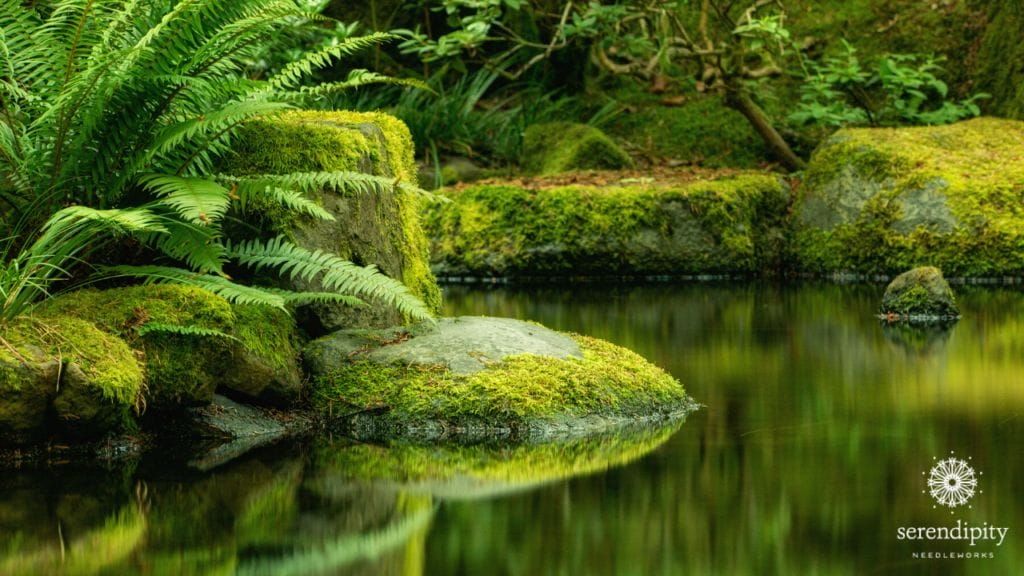
The Nobuko stitch is terrific for stitching smooth water.
It has a subtle directionality and is easy peasy to execute when you follow the numbers on the stitch diagram.
I’ll share a stitch demonstration during this week’s episode of Needlepoint TV™, so be sure and join me later today – at 3:00 p.m. CDT – over on the Serendipity Needleworks Facebook page. 🙂
The Nobuko stitch is truly a workhorse stitch that you’ll find yourself using over and over again. It’s one of those stitches I think every needlepointer should know.
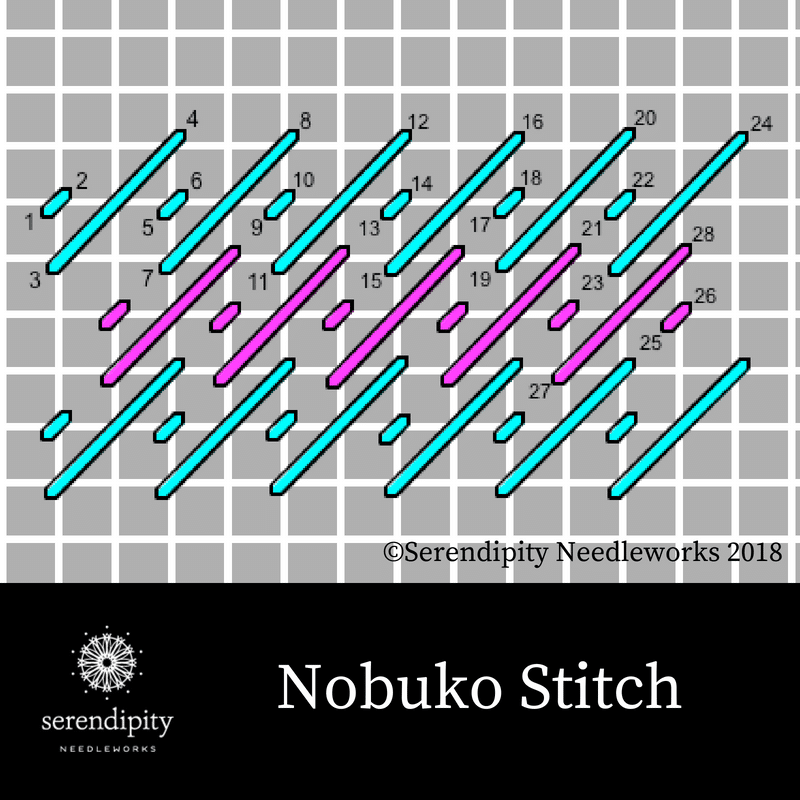
In addition to water, it’s great for a variety of other design components, too.
You can use it for mountains, sky, meadows, lawns, and snow – and it’s also a terrific background stitch.
Execute this stitch from top to bottom – back and forth in horizontal rows – in an area, following the numbers on the stitch diagram above.
It’s a small to medium-size stitch, so it’ll fit in just about any space.
I’m using Water n’ Ice to work the Nobuko stitch.
Water n’ Ice is a loosely braided translucent ribbon-type thread. It is 100% nylon and is available in 18 colors. Each card holds 10 yards and there are 18 colors currently available.
While Water n’ Ice can be a little finicky to work with, it’s well worth the effort – especially on painted canvases where you want the color to show through. It has a tendency to fray, so use Fray Check or a Thread Zap to treat the ends and use short pieces (no longer than 15″).
You have a couple of options when using Water n’ Ice to stitch water. You can work the Nobuko stitch in the clear color (WT12) and allow the paint to show through. Or you can use different colors of Water n’ Ice to add more depth of hue.
My favorite Water n’ Ice colors for stitching water are…
- WT 2 – Water Blue
- WT13 – Aqua
- WT14 – Ocean
Use the stabbing method to stitch – come straight up through the canvas and take your needle to the back straight down through the canvas – being careful not to drag your thread along the surface or pull it at an angle. And be sure to use a laying tool.
To get the best effect with this thread, it should lay flat against the canvas on both the front and the back. It takes a little practice to get the hang of laying ribbon-type threads flat on the backside of your work without having to flip your canvas over with every single stitch you take. Don’t be too hard on yourself if you don’t get it right away. Just keep at it and your persistence will pay off.
I’m using one strand of Water n’ Ice (WT12) in a #22 tapestry needle to work my stitch sample on a piece of 18 mesh needlepoint canvas.
Oh – and you can also use this stitch/thread combo to stitch gently flowing streams on your needlepoint projects – like the one you see on this canvas by Sandra Gilmore.
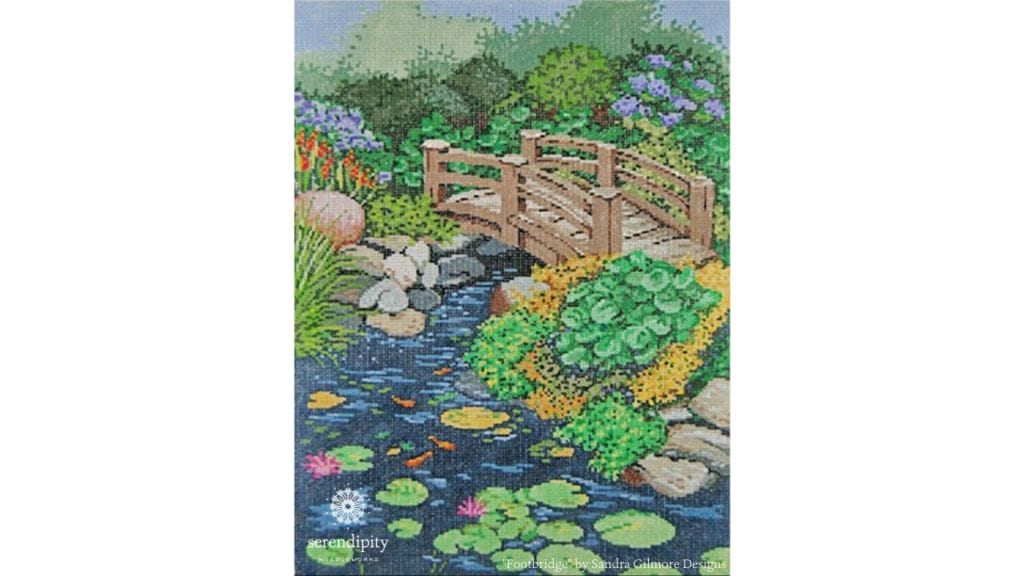
Well, my friend… that brings us to the end of our tour of the Portland Japanese Garden and their lovely water features.
Thank you ever so much for joining me on our 2020 Spring Threadventure Garden Tour across the US.
Until next time…
Happy stitching!
XOXO!!! ❤️

PS: If you’re new to the Serendipity Needleworks family – or just discovered my blog, click here for more info on what a Threadventure actually is. And click here to read about the very first destination on our 2020 Spring Threadventure Garden Tour.



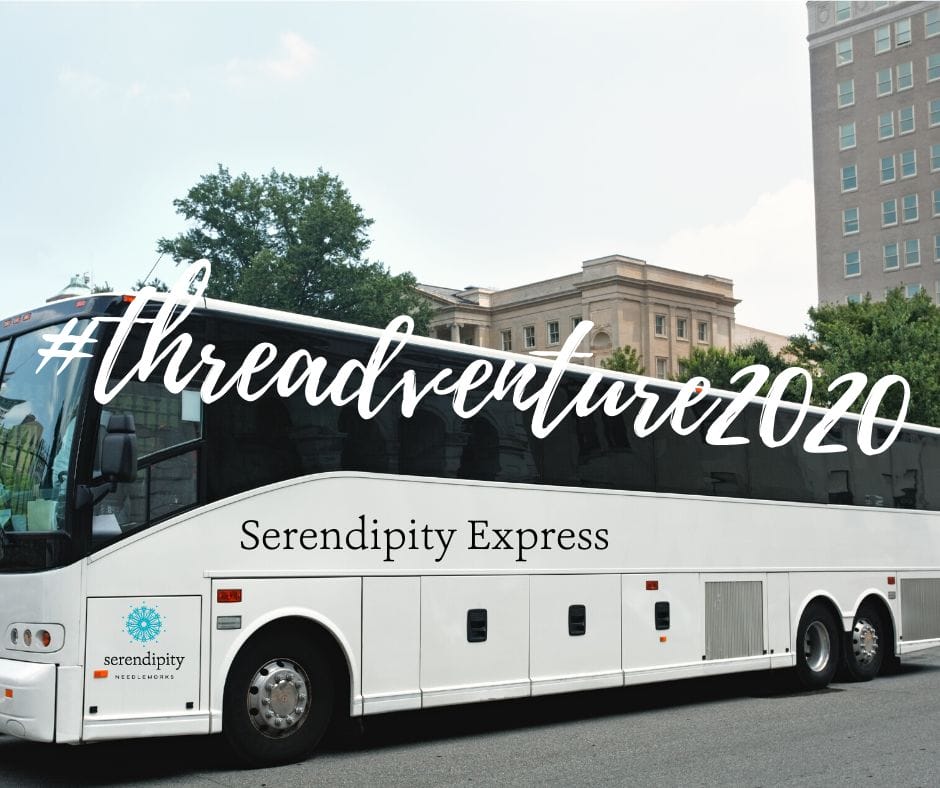
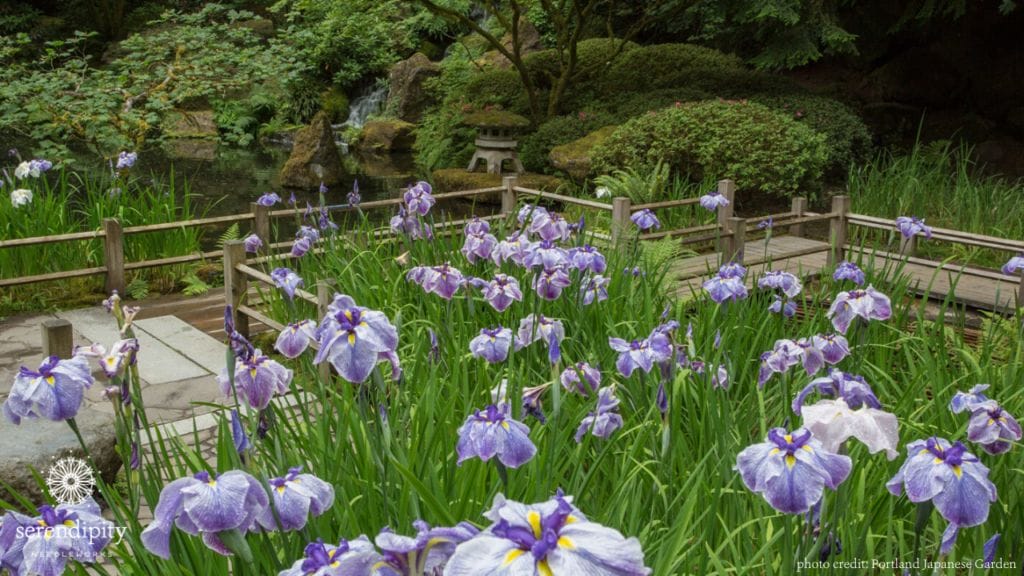


Please let me know about any future trips. Thank you, Dianne Prevost
I sure will, Diane! Thank you for your interest!
XOXO!
Ellen 🙂